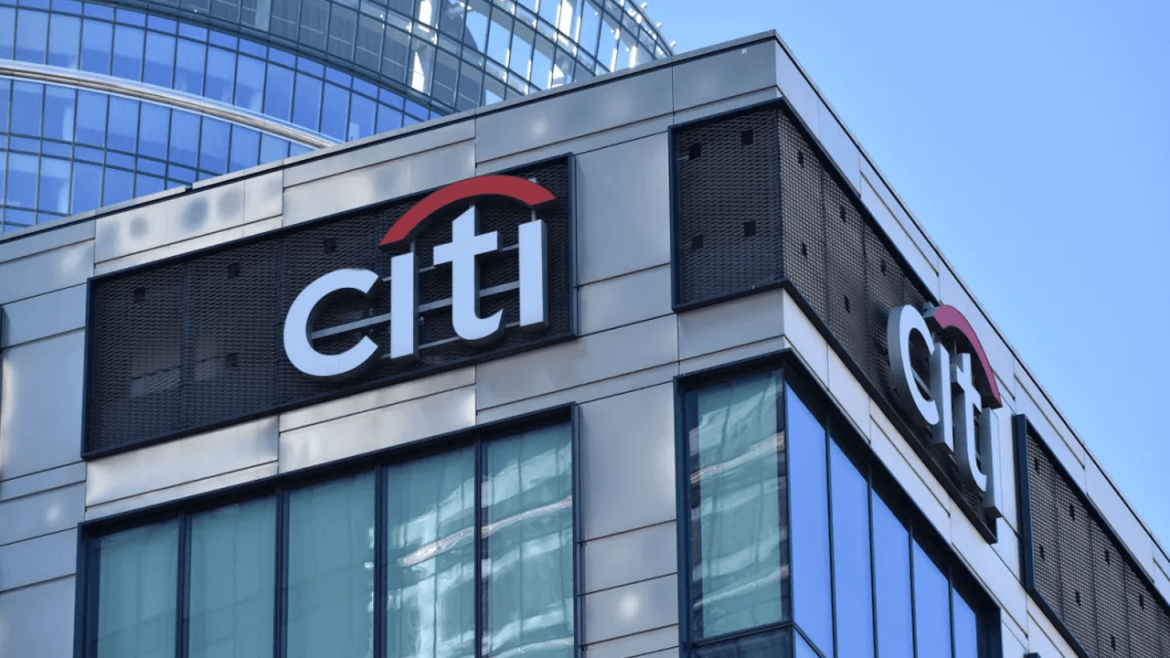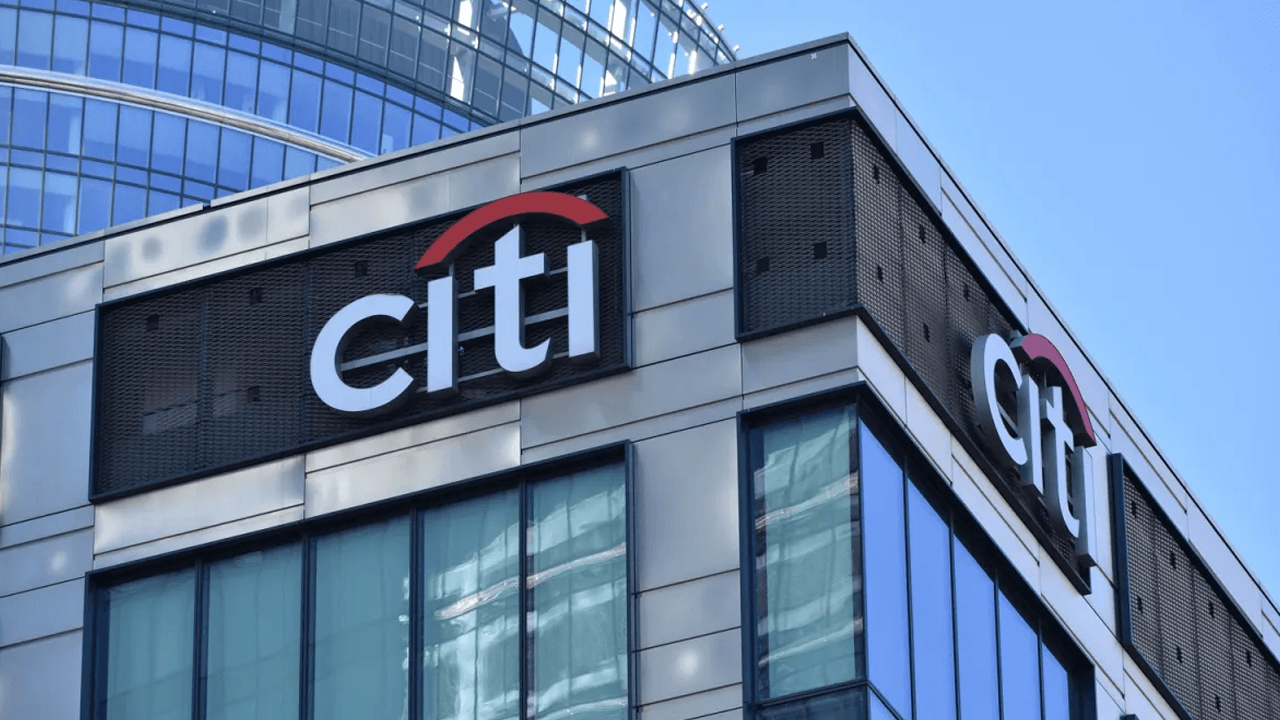Decoding Citi’s Bitcoin Bet: A 2025 Price Prediction Analysis
Introduction: A Glimpse into the Crystal Ball
Predicting the future of Bitcoin is akin to navigating a labyrinth of uncertainty, where every turn presents new variables and potential pitfalls. Yet, when a financial titan like Citigroup ventures into this realm, the crypto community takes notice. Citi’s recent forecast, which envisions Bitcoin reaching $135,000 by the end of 2025 in its base-case scenario and potentially soaring to $199,000 in a bullish outlook, has sparked intense debate. This report delves into the intricacies of Citi’s analysis, dissecting the key drivers behind these projections and offering a balanced perspective on Bitcoin’s potential trajectory.
The Three Pillars: Scenarios Unveiled
Citi’s forecast is not a singular prediction but a nuanced exploration of three possible futures, each reflecting different market dynamics and external influences. This approach acknowledges the inherent volatility and unpredictability of the cryptocurrency market.
Base Case: $135,000
This scenario represents Citi’s most likely outcome, predicated on a continuation of current trends. The base case assumes steady growth in key areas such as ETF inflows, institutional adoption, and user growth. It also factors in the ongoing development of the Bitcoin ecosystem, including technological advancements and regulatory clarity. This projection serves as a benchmark, providing a middle ground between extreme optimism and pessimism.
Bullish Case: $199,000
The bullish scenario paints a more optimistic picture, with Bitcoin’s price potentially reaching $199,000. This projection hinges on several factors, including stronger-than-expected growth in ETF demand, accelerated institutional adoption, and favorable regulatory developments. It also considers the possibility of macroeconomic conditions that could drive investors toward Bitcoin as a hedge against inflation or currency devaluation. This scenario is not merely a pipe dream but a plausible outcome if current trends continue to accelerate.
Bearish Case: $64,000
Conversely, Citi also outlines a bearish scenario where weaker macroeconomic conditions, such as rising interest rates or a global recession, could negatively impact Bitcoin’s price. This projection acknowledges the potential for market downturns, regulatory crackdowns, or technological setbacks that could drive Bitcoin’s price down to $64,000. While this scenario is less likely according to Citi’s analysis, it serves as a crucial reminder of the risks inherent in cryptocurrency investment.
ETF Inflows: The Rocket Fuel of Bitcoin’s Ascent
A significant factor driving Citi’s bullish outlook is the impact of spot Bitcoin ETFs. These investment vehicles, approved in the U.S. in early 2024, have opened Bitcoin to a wider range of investors, including institutional players who were previously hesitant to directly hold the cryptocurrency.
The ETF Effect
Citi estimates that ETF flows alone now account for over 40% of recent Bitcoin price variation, underscoring their outsized role in shaping market sentiment. This influx of capital provides significant buying pressure, driving up demand and, consequently, the price of Bitcoin. The continued success of these ETFs hinges on several factors, including regulatory clarity, market sentiment, and the overall performance of the broader financial markets.
Potential Pitfalls
However, the reliance on ETF inflows also introduces a degree of vulnerability. Any slowdown or reversal in these flows could dampen Bitcoin’s price momentum. Additionally, regulatory changes or shifts in investor sentiment could impact the flow of capital into these ETFs, potentially leading to a correction in Bitcoin’s price.
Beyond ETFs: The Broader Ecosystem at Play
While ETF inflows are undoubtedly a major catalyst, Citi’s analysis likely considers other factors influencing Bitcoin’s long-term trajectory. These factors collectively contribute to the overall health and growth of the Bitcoin ecosystem.
Institutional Adoption
The increasing acceptance of Bitcoin by corporations, hedge funds, and other institutional investors provides further validation and support for its value. As more institutional players enter the market, they bring with them significant capital and expertise, which can drive up demand and stabilize the market.
User Growth
As more individuals and businesses adopt Bitcoin for transactions and investments, its network effect strengthens. This increased adoption can lead to greater liquidity, more use cases, and a more robust ecosystem, all of which can drive up demand and price.
Technological Advancements
Ongoing developments in the Bitcoin ecosystem, such as layer-2 scaling solutions like the Lightning Network, can improve its functionality and usability. These advancements make Bitcoin more attractive to a wider audience, potentially driving up demand and price.
Halving Events
The Bitcoin halving, which occurs approximately every four years, reduces the rate at which new bitcoins are created. This reduction in supply, coupled with increasing demand, can lead to price appreciation. The next halving is expected to occur in 2024, which could have a significant impact on Bitcoin’s price trajectory.
Macroeconomic Factors
Inflation, interest rates, and geopolitical events can all influence investor sentiment and impact the demand for alternative assets like Bitcoin. In times of economic uncertainty, investors often turn to Bitcoin as a hedge against inflation or currency devaluation, driving up its price.
Navigating the Risks: A Reality Check
While Citi’s projections are optimistic, it’s essential to acknowledge the inherent risks associated with investing in Bitcoin. These risks can significantly impact the price and stability of the cryptocurrency, making it a high-stakes investment.
Volatility
Bitcoin is notoriously volatile, experiencing significant price swings in short periods. This volatility can be unnerving for investors and can lead to substantial losses. It’s crucial for investors to be prepared for this volatility and to only invest funds that they can afford to lose.
Regulatory Uncertainty
The regulatory landscape surrounding cryptocurrency is still evolving, and potential new regulations could negatively impact Bitcoin’s price. Governments around the world are grappling with how to regulate cryptocurrencies, and any sudden regulatory changes could lead to market turbulence.
Security Risks
Bitcoin exchanges and wallets are vulnerable to hacking and theft, potentially resulting in the loss of funds. Investors must take precautions to secure their investments, such as using hardware wallets and enabling two-factor authentication.
Competition
Bitcoin faces competition from other cryptocurrencies, and the emergence of new and innovative digital assets could erode its market share. Investors should stay informed about the broader cryptocurrency market and diversify their portfolios to mitigate this risk.
Environmental Concerns
The energy-intensive nature of Bitcoin mining has raised environmental concerns, which could lead to increased regulatory scrutiny and negative publicity. Investors should be aware of these concerns and consider the potential impact on Bitcoin’s long-term viability.
A Contrarian View: Challenging the Consensus
While Citi’s analysis provides valuable insights, it’s important to consider alternative perspectives and potential counterarguments. These perspectives can offer a more nuanced understanding of the risks and opportunities associated with Bitcoin investment.
Market Saturation
The cryptocurrency market is becoming increasingly crowded, with thousands of different coins and tokens vying for attention. This increased competition could dilute demand for Bitcoin and limit its potential for growth. Investors should be aware of this dynamic and consider the potential impact on Bitcoin’s market share.
Technological Obsolescence
Bitcoin’s underlying technology is relatively old compared to some newer cryptocurrencies. There is a risk that Bitcoin could become technologically obsolete if it fails to adapt to changing market demands. Investors should stay informed about technological developments in the cryptocurrency space and consider the potential impact on Bitcoin’s long-term viability.
Bubble Territory
Some analysts believe that Bitcoin is currently in a bubble, and that its price is unsustainable. If the bubble bursts, Bitcoin’s price could experience a significant correction. Investors should be prepared for this possibility and consider the potential impact on their portfolios.
Conclusion: A Measured Approach to the Future
Citi’s projection of Bitcoin reaching $135,000 by the end of 2025 offers a compelling glimpse into the potential future of the cryptocurrency. The analysis highlights the significant impact of ETF inflows and other factors driving Bitcoin’s growth. However, it’s crucial to acknowledge the inherent risks and uncertainties associated with investing in Bitcoin and to approach these projections with a healthy dose of skepticism.
The future of Bitcoin remains uncertain, and investors should conduct thorough research and exercise caution before making any investment decisions. Ultimately, whether Bitcoin reaches $135,000, $199,000, or $64,000, the journey promises to be a fascinating one. As the cryptocurrency market continues to evolve, investors must stay informed, adapt to changing conditions, and make decisions based on a balanced understanding of the risks and opportunities.





